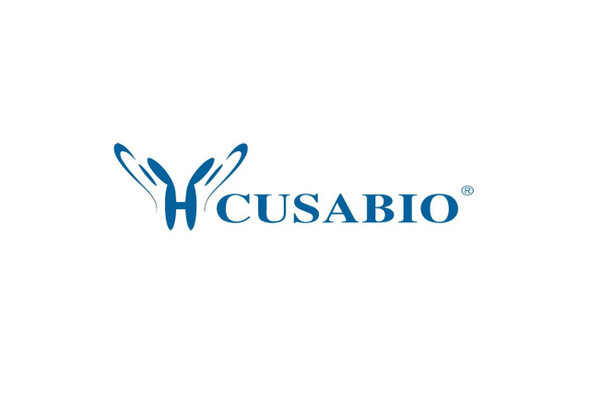Cusabio Canis lupus familiaris Recombinants
Recombinant Dog Caveolin-1 (CAV1) | CSB-YP004571DO
- SKU:
- CSB-YP004571DO
- Availability:
- 25 - 35 Working Days
Description
Recombinant Dog Caveolin-1 (CAV1) | CSB-YP004571DO | Cusabio
Alternative Name(s): Vesicular integral-membrane protein VIP21
Gene Names: CAV1
Research Areas: Others
Organism: Canis lupus familiaris (Dog) (Canis familiaris)
AA Sequence: MSGGKYVDSEGHLYTVPIREQGNIYKPNNKAMAEEMSEKQVYDAHTKEIDLVNRDPKHLNDDVVKIDFEDVIAEPEGTHSFDGIWKASFTTFTVTKYWFYRLLSALFGIPMALIWGIYFAILSFLHIWAVVPCIKSFLIEIQCISRVYSIYVHTFCDPFFEAVGKIFSNIRINMQKET
Source: Yeast
Tag Info: N-terminal 6xHis-tagged
Expression Region: 1-178aa
Sequence Info: Full Length
MW: 22.6 kDa
Purity: Greater than 90% as determined by SDS-PAGE.
Relevance: Involved in the costimulatory signal essential for T-cell receptor (TCR)-mediated T-cell activation. Its binding to DPP4 induces T-cell proliferation and NF-kappa-B activation in a T-cell receptor/CD3-dependent manner. May act as a scaffolding protein within caveolar mbranes. Interacts directly with G-protein alpha subunits and can functionally regulate their activity. Recruits CTNNB1 to caveolar mbranes and may regulate CTNNB1-mediated signaling through the Wnt pathway.
Reference: Comparative analyses of multi-species sequences from targeted genomic regions.Thomas J.W., Touchman J.W., Blakesley R.W., Bouffard G.G., Beckstrom-Sternberg S.M., Margulies E.H., Blanchette M., Siepel A.C., Thomas P.J., McDowell J.C., Maskeri B., Hansen N.F., Schwartz M.S., Weber R.J., Kent W.J., Karolchik D., Bruen T.C., Bevan R. , Cutler D.J., Schwartz S., Elnitski L., Idol J.R., Prasad A.B., Lee-Lin S.-Q., Maduro V.V.B., Summers T.J., Portnoy M.E., Dietrich N.L., Akhter N., Ayele K., Benjamin B., Cariaga K., Brinkley C.P., Brooks S.Y., Granite S., Guan X., Gupta J., Haghighi P., Ho S.-L., Huang M.C., Karlins E., Laric P.L., Legaspi R., Lim M.J., Maduro Q.L., Masiello C.A., Mastrian S.D., McCloskey J.C., Pearson R., Stantripop S., Tiongson E.E., Tran J.T., Tsurgeon C., Vogt J.L., Walker M.A., Wetherby K.D., Wiggins L.S., Young A.C., Zhang L.-H., Osoegawa K., Zhu B., Zhao B., Shu C.L., De Jong P.J., Lawrence C.E., Smit A.F., Chakravarti A., Haussler D., Green P., Miller W., Green E.D.Nature 424:788-793(2003)
Storage: The shelf life is related to many factors, storage state, buffer ingredients, storage temperature and the stability of the protein itself. Generally, the shelf life of liquid form is 6 months at -20?/-80?. The shelf life of lyophilized form is 12 months at -20?/-80?.
Notes: Repeated freezing and thawing is not recommended. Store working aliquots at 4? for up to one week.
Function: Involved in the costimulatory signal essential for T-cell receptor (TCR)-mediated T-cell activation. Its binding to DPP4 induces T-cell proliferation and NF-kappa-B activation in a T-cell receptor/CD3-dependent manner. May act as a scaffolding protein within caveolar membranes. Interacts directly with G-protein alpha subunits and can functionally regulate their activity. Forms a stable heterooligomeric complex with CAV2 that targets to lipid rafts and drives caveolae formation. Recruits CTNNB1 to caveolar membranes and may regulate CTNNB1-mediated signaling through the Wnt pathway. Negatively regulates TGFB1-mediated activation of SMAD2/3 by mediating the internalization of TGFBR1 from membrane rafts leading to its subsequent degradation.Mediates the recruitment of CAVIN proteins (CAVIN1/2/3/4) to the caveolae.
Involvement in disease:
Subcellular Location: Golgi apparatus membrane, Peripheral membrane protein, Cell membrane, Peripheral membrane protein, Membrane, caveola, Peripheral membrane protein, Membrane raft, Golgi apparatus, trans-Golgi network
Protein Families: Caveolin family
Tissue Specificity:
Paythway:
Form: Liquid or Lyophilized powder
Buffer: If the delivery form is liquid, the default storage buffer is Tris/PBS-based buffer, 5%-50% glycerol. If the delivery form is lyophilized powder, the buffer before lyophilization is Tris/PBS-based buffer, 6% Trehalose, pH 8.0.
Reconstitution: We recommend that this vial be briefly centrifuged prior to opening to bring the contents to the bottom. Please reconstitute protein in deionized sterile water to a concentration of 0.1-1.0 mg/mL.We recommend to add 5-50% of glycerol (final concentration) and aliquot for long-term storage at -20?/-80?. Our default final concentration of glycerol is 50%. Customers could use it as reference.
Uniprot ID: P33724
HGNC Database Link: N/A
UniGene Database Link: UniGene
KEGG Database Link: KEGG
STRING Database Link: STRING
OMIM Database Link: N/A









